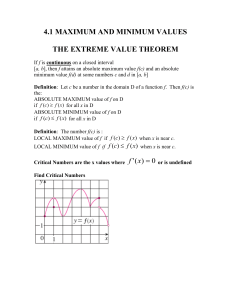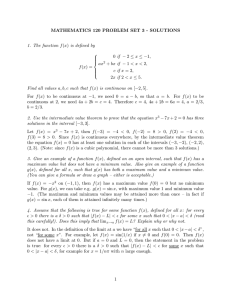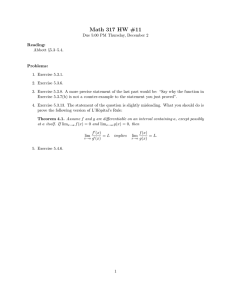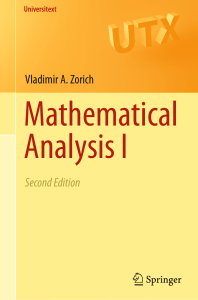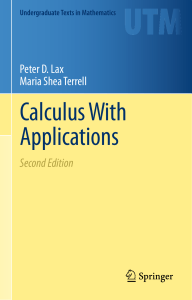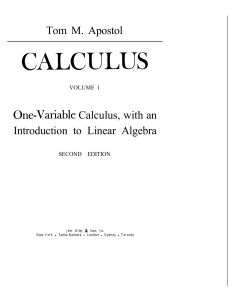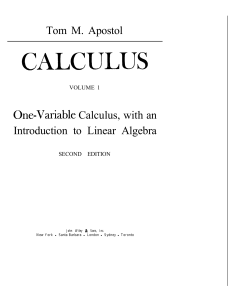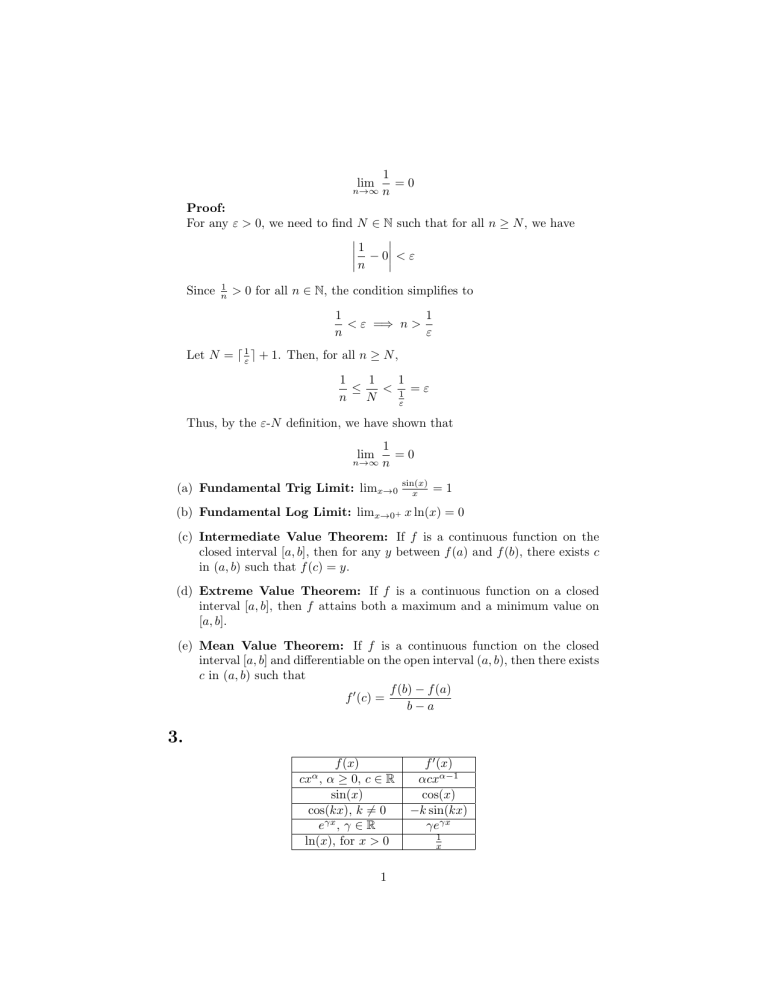
lim n→∞ 1 =0 n Proof: For any ε > 0, we need to find N ∈ N such that for all n ≥ N , we have 1 −0 <ε n Since 1 n > 0 for all n ∈ N, the condition simplifies to 1 1 < ε =⇒ n > n ε Let N = ⌈ 1ε ⌉ + 1. Then, for all n ≥ N , 1 1 1 ≤ < 1 =ε n N ε Thus, by the ε-N definition, we have shown that lim n→∞ 1 =0 n (a) Fundamental Trig Limit: limx→0 sin(x) x =1 (b) Fundamental Log Limit: limx→0+ x ln(x) = 0 (c) Intermediate Value Theorem: If f is a continuous function on the closed interval [a, b], then for any y between f (a) and f (b), there exists c in (a, b) such that f (c) = y. (d) Extreme Value Theorem: If f is a continuous function on a closed interval [a, b], then f attains both a maximum and a minimum value on [a, b]. (e) Mean Value Theorem: If f is a continuous function on the closed interval [a, b] and differentiable on the open interval (a, b), then there exists c in (a, b) such that f (b) − f (a) f ′ (c) = b−a 3. f (x) cx , α ≥ 0, c ∈ R sin(x) cos(kx), k ̸= 0 eγx , γ ∈ R ln(x), for x > 0 α 1 f ′ (x) αcxα−1 cos(x) −k sin(kx) γeγx 1 x 4. plot of f (x) = x3 +x2/3 x2 −1 Figure 1: Graph of f (x) = 2 x3 +x2/3 x2 −1
